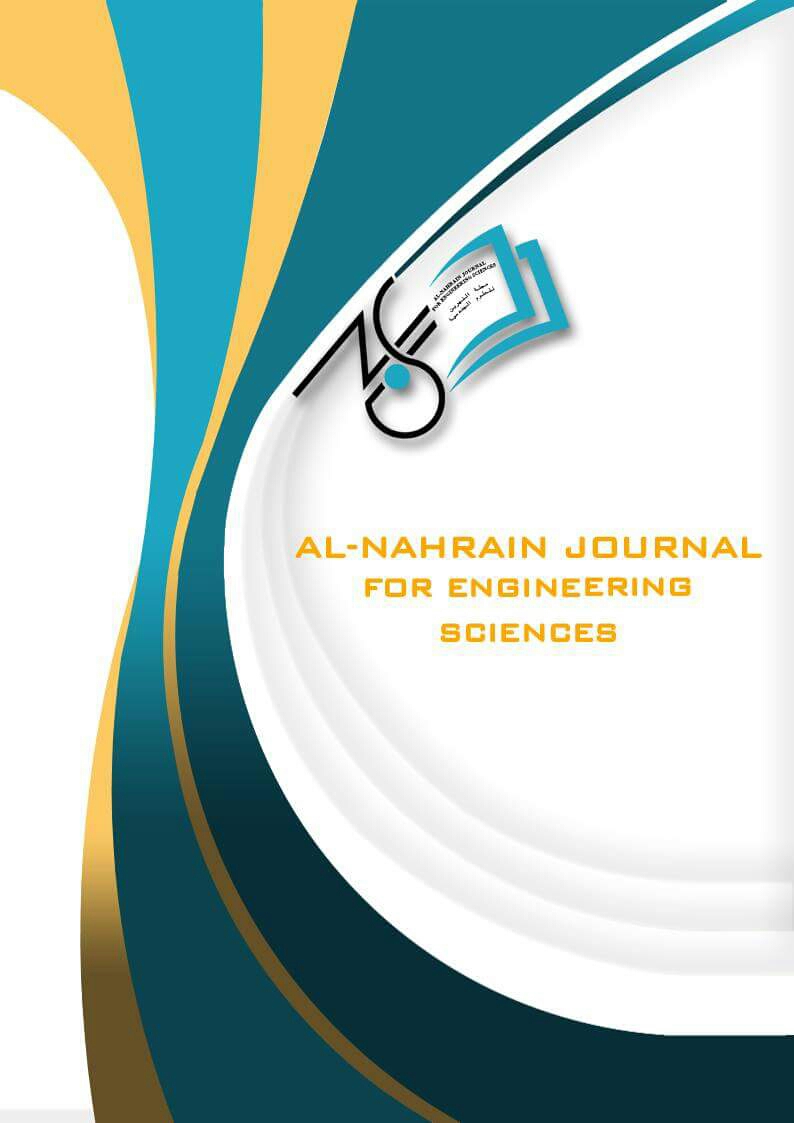Performance of Single Degree of Freedom (SDOF) Systems Subjected to The Near-Fault Earthquakes
DOI:
https://doi.org/10.29194/NJES.27010032Keywords:
Near Fault Earthquake, SDOF, Pulse Period, Shear Wave Velocity, Fault MechanismAbstract
This paper aims to assess the structures' seismic response with a system of Single-degree-of-freedom exposed to near-fault earthquakes, taking into account the effect of pulse period, shear wave velocity (VS30), and fault mechanism. Strong ground motion data were taken for different events in different places around the world and the prism software program is used for the analysis of seismic response for structures recognized as single-degree-of-freedom systems. Results show that the ground motion with a higher value of (VS30) provides an acceleration response higher than that of the lower value of (VS30). However, the findings revealed that the peak displacement requirements are observed in a nearby of the pulse period limits. In addition, it is noticed that there is an obvious increase in spectrum demand with longer pulse periods. Finally, results show at short vibration periods (T? 0.6sec) for both types (strike slip and dip slip) comparable results while an increment is observed in the results of the strike-slip for vibration periods more than (0.6sec) of the acceleration response spectrum. Nonetheless, for the velocity response spectrum dip-slip continuous in flocculating with a significant increase.
Downloads
References
M. Davoodi, M. Sadjadi, P. Goljahani, and M. Kamalian, “Effects of near-field and far-field earthquakes on seismic response of sdof system considering soil structure interaction,” 2012. DOI: 10.1007/978-3-642-84388-4
P. G. Somerville, N. F. Smith, R. W. Graves, and N. A. Abrahamson, “Modification of empirical strong ground motion attenuation relations to include the amplitude and duration effects of rupture directivity,” Seismological Research Letters, vol. 68, no. 1, pp. 199–222, 1997. DOI: 10.1785/gssrl.68.1.199
A. Ghobarah, “Response of structures to near-fault ground motion,” in 13th World Conference on Earthquake Engineering, 2004, vol. 1031.M. Davoodi, M. Sadjadi, P. Goljahani, and M. Kamalian, “Effects of near-field and far-field earthquakes on seismic response of sdof system considering soil structure interaction,” 2012.
United States Geological Survey, "What is a fault and what are the different types”, https:// www. usgs.gov/faqs/what-a-fault-and-what-are-different-types, accessed at 2023.
“Fault types,” Encyclopædia Britannica, https://www.britannica.com/science/fault-geology (accessed Nov. 12, 2023).
K. S. Liu, Y. Ben Tsai, and P. S. Lin, “A study on fault-type and site-effect (VS30) parameters in the attenuation relationships of peak ground acceleration and peak ground velocity in Ilan, Taiwan,” Bulletin of the Seismological Society of America, vol. 103, no. 1, pp. 1–14, 2013. DOI: 10.1785/0120120039
L. F. Ibarra and R. A. Medina, “Hysteretic models that incorporate strength and stiffness deterioration,” Earthquake Engineering & Structural Dynamics, vol. 34, no. 12, pp. 1489–1511, 2005. DOI: 10.1002/eqe.495
L. Ibarra and H. Krawinkler, “Variance of collapse capacity of SDOF systems under earthquake excitations,” Earthquake Engineering & Structural Dynamics, vol. 40, no. 12, pp. 1299–1314, 2011. DOI: 10.1002/eqe.1089
C. Adam and C. Jäger, “Seismic collapse capacity of basic inelastic structures vulnerable to the P‐delta effect,” Earthquake Engineering & Structural Dynamics, vol. 41, no. 4, pp. 775–793, 2012. DOI: 10.1002/eqe.1123
C. Adam and C. Jäger, “Simplified collapse capacity assessment of earthquake excited regular frame structures vulnerable to P-delta,” Engineering Structures, vol. 44, pp. 159–173, 2012. DOI: 10.1016/j.engstruct.2012.05.036 .
C. Jäger and C. Adam, “Influence of collapse definition and near-field effects on collapse capacity spectra,” J. Earthq. Eng., vol. 17, no. 6, pp. 859–878, 2013, doi: 10.1080/13632469.2013.795842.
S. Tsantaki, L. F. Ibarra, and C. Adam, “Effect of P-delta uncertainty on the seismic collapse capacity and its variability of single-degree-of freedom systems,” Bull. Earthq. Eng., vol.13, no.4, pp. 1205–1225, 2015, doi: 10.1007/s10518-014-9687-9.
M. Davoodi and M. Sadjadi, “Assessment of near-field and far-field strong ground motion effects on soilstructurec SDOF system,” Int. J. Civ. Eng., vol. 13, no. 3–4, pp. 153–166, 2015.
A. K. Chopra and C. Chintanapakdee, “Comparing response of SDF systems to near‐fault and far‐fault earthquake motions in the context of spectral regions,” Earthq. Eng. Struct. Dyn., vol. 30, no. 12, pp. 1769–1789, 2001. Am., vol. 103, no. 3, pp. 1823–1845, 2013, doi: 10.1785/0120120065.
O. F. Yalcin and M. Dicleli, “Effect of the high frequency components of near-fault ground motions on the response of linear and nonlinear SDOF systems: a moving average filtering approach,” Soil Dyn. Earthq. Eng., vol. 129, p. 105922, 2020.
Y. Cheng, Y. R. Dong, L. Qin, Y. Y. Wang, and Y. X. Li, “Seismic energy response of SDOF systems subjected to long-period ground motion records,” Adv. Civ. Eng., vol. 2021, 2021, doi: 10.1155/2021/6655400.
Peer Strong Motion Database, Peer Ground Motion Database – Peer Center (Berkeley.Edu), 2023.
Anwer Hameed, “Seismic Analysis of Cylindrical Reinforced Concrete Silos Under Far-Field and Near Fault Earthquakes,” Master Thesis, Civil Engineering Department Al-Nahrain University, Baghdad, Iraq,2022.
I. U. Meidji, M. Rusydi, Asrafil, H. Jayadi, and N. Safitri, “Sediment thickness mapping and soil classification using ellipticity inversion of Rayleigh wave in the eastern part of Mataram City, Indonesia,” J. Phys. Conf. Ser., vol. 1763, no. 1, 2021, doi: 10.1088/1742-6596/1763/1/012049.
G. Haitham Razzaq and H. K. Risan, “The Effect of Soil Characteristics On NFGM and FFGM Ground Motion Response Spectra,” 3C TIC Cuad. Desarro. Apl. a las TIC, vol. 12, no. 1, pp. 29–44, 2023, doi: 10.17993/3ctic. 2023.121.29-44.
A.Muhsin and H. Kadem, “Major Parameters Affect the Non-Liner Response of Structure Under Near-Fault Earthquakes,” Civ. Eng. J., vol. 5, no. 8, pp. 1714–1725, 2019, doi: 10.28991/cej-2019-03091365.
Layla Akram, “The Effect Of A Predominant Pulse Period (Tp) Hanging Wall, And Footwall In The Near-Fault Ground Motions On A Single Degree Of Freedom System (Sdof),” Harbin Gongye DaxueXuebao/Journal Harbin Inst. Technol., vol. 54,no. 12, pp. 11–18, 2022.
Downloads
Published
Issue
Section
License
Copyright (c) 2024 Ayah Hameed Mhawish, Hussam K. Reisn

This work is licensed under a Creative Commons Attribution-NonCommercial 4.0 International License.
The authors retain the copyright of their manuscript by submitting the work to this journal, and all open access articles are distributed under the terms of the Creative Commons Attribution-NonCommercial 4.0 International (CC-BY-NC 4.0), which permits use for any non-commercial purpose, distribution, and reproduction in any medium, provided that the original work is properly cited.














